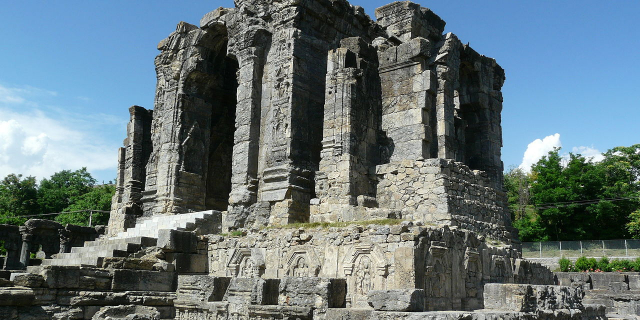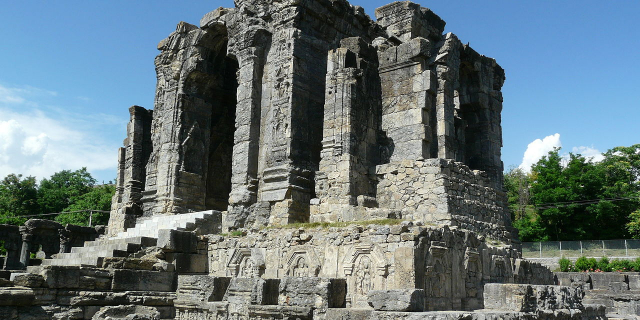वैष्णो देवी मंदिर
( Vaishno Devi Temple )
Vaishno Devi Temple, also known as the Shri Mata Vaishno Devi Temple and Vaishno Devi Bhavan, is a Hindu mandir (temple) located in Katra, Jammu and Kashmir, dedicated to Vaishno Devi, a manifestation of Durga. It is located on the Trikuta mountain at 5,000 feet elevation. The Shakti tradition considers it to be a Shakti Pitha. The temple is governed by the Shri Mata Vaishno Devi Shrine Board (SMVDSB) and has been chaired by the Government of Jammu and Kashmir since August 1986.
Every year, millions of devotees visit the temple.
The temple, at a height of 1,585 metres (5,200 ft) is 12 km from Katra on Trikuta hill. It is about 61 km from Jammu city.[1][2] A geological study of the Holy Cave has indicated its age to be nearly a million years. There is also a mention of the Trikuta hill in Rigveda, the place where the temple is located.[3]
The Mahabharata, which gives the account of the Pandavas and the Kurukshetra War, does mention the worship of goddess Vaishno Devi. Before the Kurukshetra War Arjuna is said to have worshipped Durga by the advice of Lord Krishna for the blessings. Pleased by his devotion, Mother Goddess appeared in front of him in the form of Vaishno Devi. When goddess appeared, Arjuna started praising her with a stotra, in which a Shloka goes by saying ‘ Jambookatak Chityaishu Nityam Sannihitalaye ’, which means ‘you who always dwell in the temple on the slope of the mountain in Jambhu’ — probably referring to the present day Jammu.[4] Former Governor of Jammu and Kashmir Jagmohan says, "the Mata Vaishno Devi shrine is an ancient one whose antiquity is pre-Mahabharathan, Lord Krishna is believed to have advised Arjuna to go up in the hills of 'Jambhu' and seek the blessings of Vaishno Devi before taking up arms in the battlefield. 'Jambhu' is identified with present-day Jammu. Arjuna while worshipping Vaishno Devi, calls Her, the highest Yogin who is free from decrepitude and decay, who is the Mother of the Vedas and the Science of Vedanta and who is giver of Victory and personification of victory itself".[5] It is also generally believed that the Pandavas were the first to build the temples at Kol Kandoli and Bhawan in reverence and gratitude for the Mother Goddess. On a mountain, just adjacent to the Trikuta Mountain and overlooking the Holy Cave are five stone structures, which are believed to be the rock symbols of the five Pandavas.[6][7][8]
The appearance of Vaishno Devi to Shridhar and the story of Bhairon Nath Bhairon Nath Temple, where the head of Bhairon Nath fell on hill
Bhairon Nath Temple, where the head of Bhairon Nath fell on hillIt is said that Bhairon Nath, a famous Hindu Tantric, saw the young Vaishno Devi at an agricultural fair and fell madly in love with her. Vaishno Devi fled into Trikuta hills to escape his amorous advances, later she turned into her original form of Durga and cut off his head with her sword in a cave.[9][10]
According to author Manohar Sajnani, Hindu mythology holds that the original abode of Vaishno Devi was Ardh Kunwari, a place about 6 km[11] between Katra town and the cave.





































Add new comment